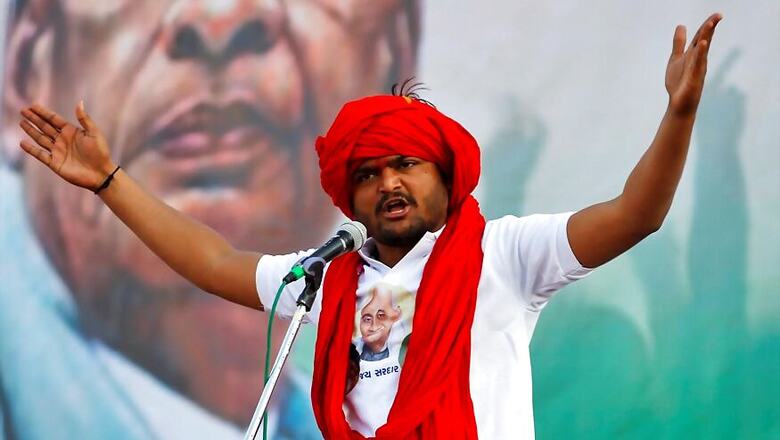
views
Rajkot: Since 2015, Gujarat has seen the emergence of three “young turks” who are determined to upset the BJP apple cart in the state. Hardik Patel, Jignesh Mevani and Alpesh Thakor have all tried to rally their respective communities – Patidars, Dalits and Other Backward Castes (OBCs) – against the ruling party.
Much of the focus has been on Hardik and his Patidar Anamat Andolan Samiti (PAAS) whose activists have protested, often violently, against the BJP. From flinging chairs at an Amit Shah event to clashing with BJP workers in Surat, Patidars have been the focus of this election cycle. But their “unity” as a singular voting bloc is by no means guaranteed. If the Patidars fail to vote as one and don’t swing from the BJP to the Congress, the election may well come down to which way the state’s OBC voters will go.
While it is expected that Hardik’s agitation will lead to a dent in the BJP’s traditional support base – the Patidars, it is unclear just how big a dent this will be. Several key members of Hardik’s inner circle have broken away from the agitation to join the BJP.
The two main sub-castes of the Patidars are the Leuvas and the Kadvas. The Leuva Patels, given their greater number, are more influential electorally, particularly in the Saurashtra region. Hardik belongs to the Kadva Patel community, whose influence is limited to a few seats in northern Gujarat.
OBCs make up 51 percent of Gujarat’s population. Kolis alone make up around 20%, making them the largest caste group in Gujarat. This Patidars make up less than 15%. In several of Gujarat’s 182 seats, the split in the Patidar vote would mean OBCs would take center stage.
Take for instance, the constituency of Dhoraji in Rajkot district. The seat has around 70,000 Patidar voters. While Leuva Patels are present across Gujarat in larger numbers than Kadva Patels, in Dhoraji both sub-castes are present in almost equal numbers. The battle in Dhoraji is shaping up to be a Kadva versus Leuva fight.
BJP has fielded Haribhai Patel, a Kadva Patel, against Congress candidate Lalit Vasoya, a Leuva Patel. The hope in the Congress camp is that while Vasoya may be able to pull Leuva Patels towards the Congress, Hardik’s agitation will make enough of a dent in the Kadva Patel community for their loyalties to shift to the Congress.
But the largest voting bloc in Dhoraji is not the Patidars. Compared to 70,000 Patidars in the constituency, there are over 82,000 Non-Koli OBCs and 7,000 Kolis.
In other seats, OBCs may not be the largest bloc, but they will end up being kingmakers in the event of a split in the Patidar vote. In the urban seat of Rajkot West, where Chief Minister Vijay Rupani is being challenged by Congress leader Indranil Rajyaguru, there are 28,000 Leuva Patels, 40,000 Kadva Patels and 20,000 OBCs.
In Jetpur, BJP is hoping that Jayeshbhai Radadiya, son of veteran Patidar leader Vitthalbhai Radadiya, may be able to keep the 1 lakh Patidar voters with the BJP. But if the PAAS agitation makes a dent in Radadiya’s base, the election will hinge on the 20,000 non-Koli OBCs and 18,000 Kolis. The Gondal seat, too, may see OBC vote may emerge as the decider with 85,000 Patidars and 60,000 OBCs.
Beyond Rajkot district, however, OBCs outnumber Patidars in most places. That is, perhaps, why, Congress Vice-President Rahul Gandhi reached out to the Koli fishing community in Porbandar during his visit last week. In other districts of Saurashtra, too, Kolis are the deciding voters. In Bhavnagar district, Kolis form around 32% of the entire electorate.
While the debate around OBCs may not have been as polarising as that around Patidars, their position as “kingmakers” will also hinge on their ability to unite in favour of one party. The OBCs are made of several disparate caste groups, including Kolis and Thakors, spread over the entire state. Alpesh Thakor’s move to join the Congress may seem, at first, a victory for the Grand Old Party but given that the Thakor community has traditionally voted for the Congress means that the equation may not change much.


















Comments
0 comment